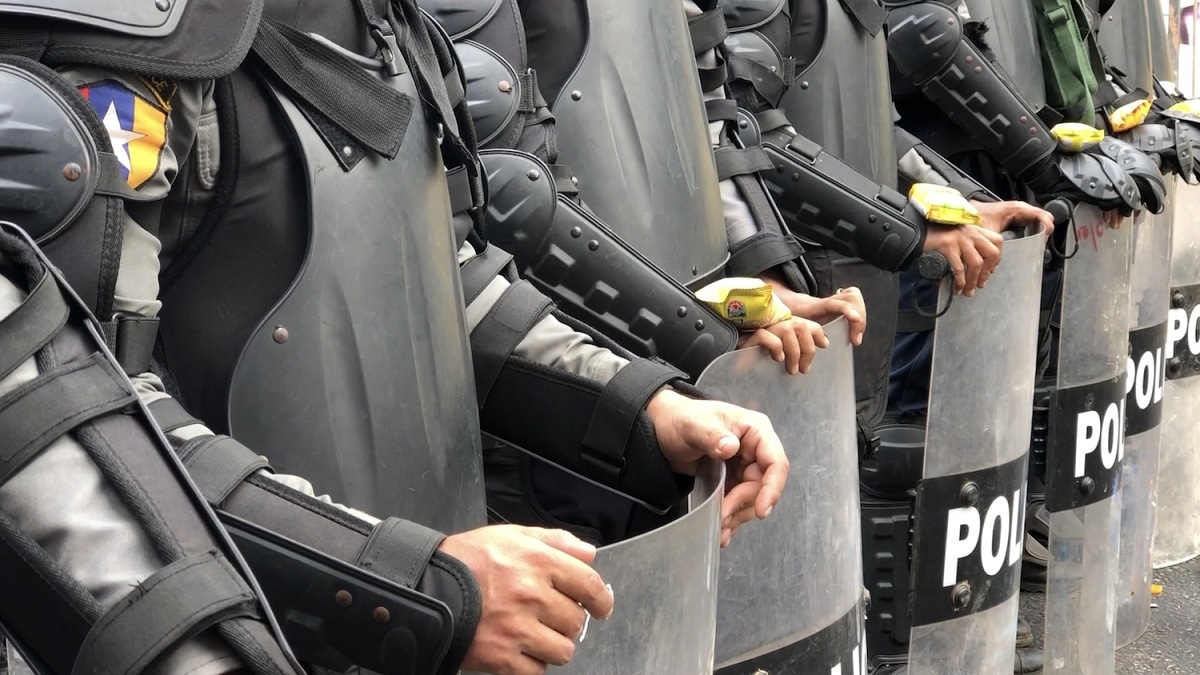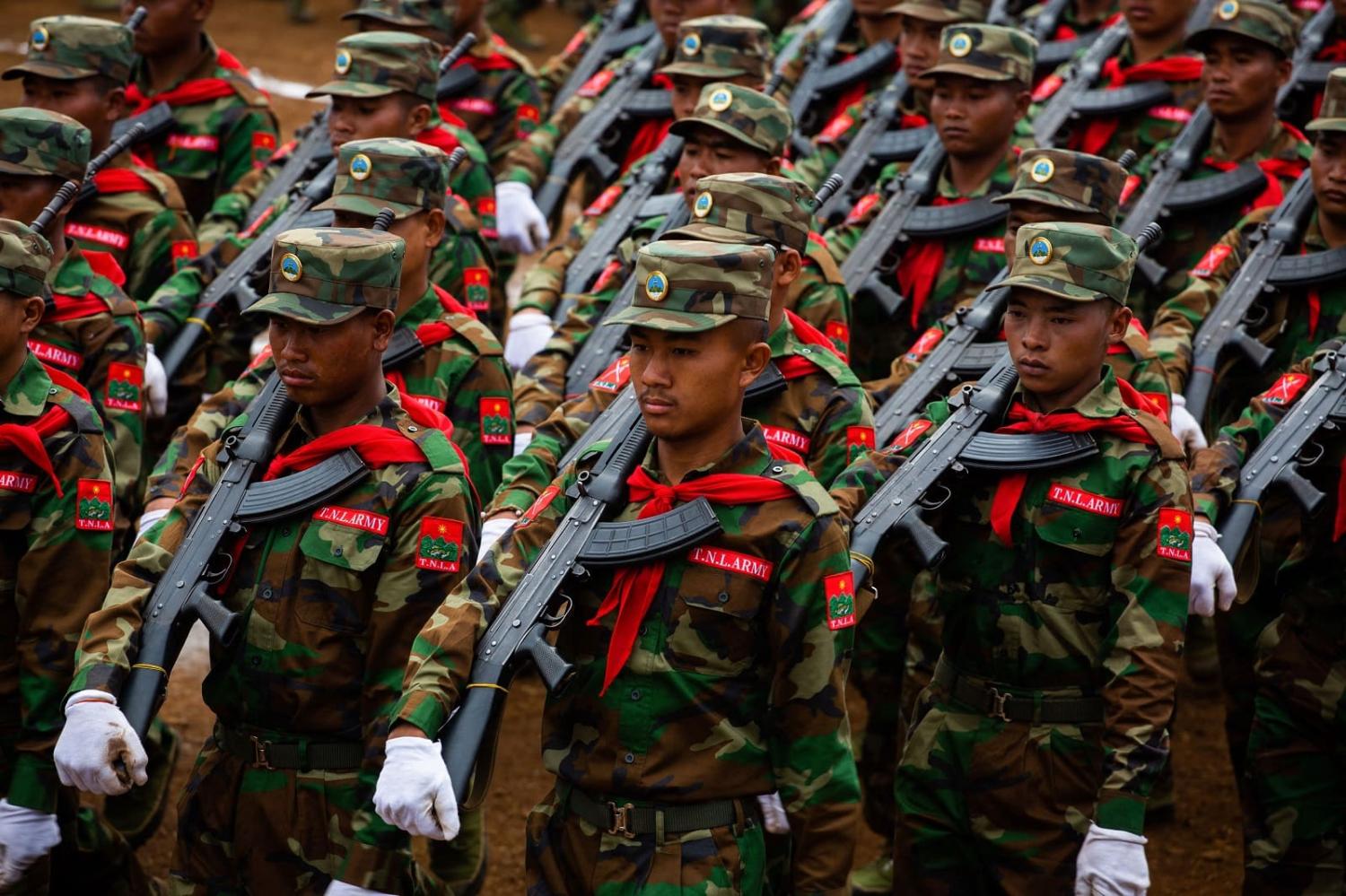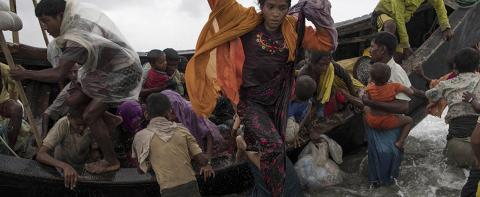Since the latest civil war began in Myanmar in 2021, elements of the opposition movement have been making increasingly bold claims about its battlefield successes and the problems facing the military regime. Some of these claims need to be treated very carefully.
There is no doubt that the shadow National Unity Government (NUG) and its People’s Defence Force (PDF), together with various other groups, have made considerable progress against the junta. Contrary to the expectations of many observers, the armed resistance has become better organised, better trained and better equipped. It is now able to pose a real challenge to the junta’s military forces (the Tatmadaw) and police.
This has led to some remarkable claims. For example, in 2022, the NUG’s acting president Duwa Lashi La announced that the regime had lost control of at least half the country. More recently, the NUG claimed (without presenting any evidence) that more than 15,000 military and police personnel had “defected” to the opposition. This had reportedly undermined the morale of the security forces and left the junta gravely weakened.
Such claims have been welcomed by supporters of the opposition movement, who have predicted the imminent collapse of the military regime. Some claims have even been supported by professional observers. The Special Advisory Council for Myanmar, for example, stated last year that the opposition movement writ large, that is, including sympathetic ethnic armed organisations (EAO), has the greatest claim to effective control of the country.
Other observers, however, have been much more cautious. They warn that there are few independent sources of news about developments in Myanmar, and verifiable information is difficult to obtain. They note, too, that there is a public relations war being waged in the international arena that is just as important as the physical war being fought on the ground. The Economist magazine has even warned the opposition against believing their own propaganda.
Some claims may be accurate, but others stretch credibility. This is particularly the case regarding reported battlefield casualties, which are invariably weighted heavily in favour of the resistance.

The NUG and its supporters routinely claim that military operations against the Tatmadaw result in sizeable losses for the junta, while the PDF seems to suffer barely a scratch. For example, The Irrawaddy magazine has claimed that in a recent series of operations in Shan State, 76 junta soldiers were killed, with many others wounded, while the PDF and allied EAOs suffered only two deaths. Such enormous discrepancies argue strongly for caution.
It is not the first time that such extraordinary casualty figures have been put forward by opposition elements. Claims made in the past by EAOs have raised similar questions. In 2011, for example, the Kachin Independence Army claimed that, in one day of fighting, it killed 40 Tatmadaw soldiers without the loss of any of its own men.
This particular claim prompted me to write a short response (under a pseudonym) in the Australian National University’s New Mandala blog. Some of the points I made then remain valid and warrant repetition.
1. History has taught us that all statistics coming out of Myanmar since the 1962 military coup need to be treated very carefully. Few can be verified.
2. The sources of the latest claims need to be kept in mind – the NUG, PDF and EAOs are not disinterested parties taking an objective view for the sake of the historical record.
3. Battle casualties are always particularly sensitive, and in these kinds of irregular conflicts (in which the politics are as important as any developments on the ground) they can rarely be taken at face value.
4. There are a host of possible reasons for publishing such unlikely statistics. Propaganda serves many purposes: to gain a better negotiating position, to boost the morale of the home side, to undermine the morale of the opposing side, to cover up incompetence, to promote the reputations of particular commanders and units, and so on. All are possible in this case.
5. The figures published to date are inherently unlikely. It would be quite remarkable if one side in such a conflict suffered so many killed, while the other side had so few, or none.
6. Granted, the Tatmadaw may have been ambushed, or forced to attack prepared defensive positions but, even so, the published losses on the junta side are quite disproportionate. Bear in mind, too, that we are talking about a mobile guerrilla war, not a conventional conflict.
7. The high ratio of men killed to men that may have been wounded either suggests fabricated statistics or something else – for example, a policy of executing the wounded. Even in high intensity conflicts, the wounded usually outnumber those killed.
8. It is unlikely that the PDF and EAOs have the means to count Tatmadaw casualties accurately. They may be able to inspect the battlefield after each attack and count those bodies left behind, but they could not take into account the wounded who were evacuated, or the bodies of any dead that were removed.
9. It is true that the Tatmadaw currently suffers from a number of serious weaknesses. However, it also has capable commanders and experienced units who would make formidable opponents. For its part, the PDF has many young and inexperienced soldiers in its ranks, which would compromise its capabilities (the EAOs less so).
10. The Tatmadaw has a range of heavy weapons, plus air power. It has the reputation of being profligate with its men, but if it was facing the hopelessly one-sided contest suggested by the PDF’s latest claims, then it beggars belief that it would not use these weapons systems – something that would inevitably result in PDF casualties.
As always, it is hard to know precisely what is happening inside Myanmar. However, given all these factors, it would be prudent to take any published statistics with a grain of salt. Neither side has an interest in stating the plain facts about such matters, even if they were in a position to do so. As the saying goes, the first casualty of war is the truth.

